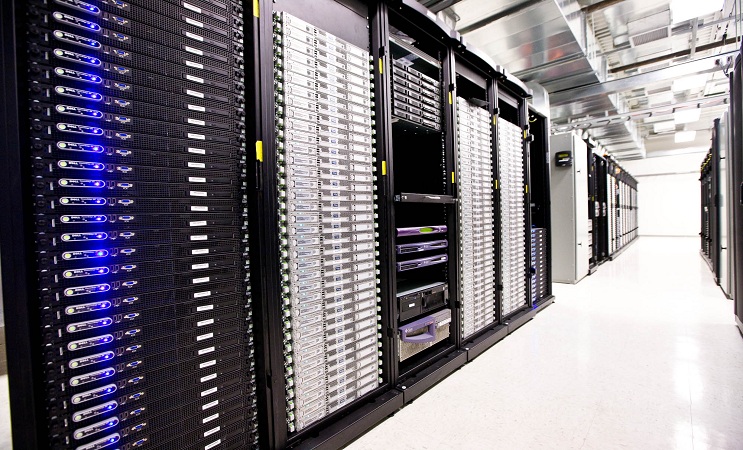
The State of the Industry
HCI is a great way to reduce operating costs and simplify IT by using a single virtual environment to combine, compute, storage and networking. This virtual-box solution is flexible and affordable enough, allowing even smaller companies and startups to purchase HCI architecture to connect and interact with their remote workers, branch offices, and IoT applications.
According to researchers, the global HCI market will continue to grow at a steady pace during the next five years. Increasing customer demand and rapid adoption of SaaS and other cloud-based solutions due to the changes in daily operations of most businesses caused by the Covid-19 pandemic has brought HCI into the spotlight. More and more vendors are offering hyperconverged solutions, both for cloud and on-premise infrastructures.

More Software Offerings
According to experts, the HCI market was valued at an impressive $7.34 billion in 2020. It's predicted to surpass the $10 billion mark by 2025. Backup and recovery solutions and performance-enhancing environments remain the main drivers of market growth. Other niches where HCI solutions are popular include VM farms, desktop virtualization software, and database management.
- The tech is moving beyond the large data centers which were its early adopters.
- IT vendors have simplified control of HCI solutions, making them available for the general market.
- The ability to scale horizontally by adding new virtual nodes is intuitively easy to understand even for non-tech-savvy entrepreneurs.
- It leads to increased adoption of HCI by companies from different sectors of the economy, including retail and logistics.
Server providers and other IT vendors are divided on the issue of HCI. While some of them seem to have exited the HCI market completely, others, including even a few hardware vendors, have doubled their efforts, focusing on selling software-only products.
HCI and Edge: A Perfect Fit
Hyperconverged infrastructure fits seamlessly with Edge computing. Even smaller companies have to rely on Edge if they have branch offices or operate in remote locations. Industries like retail and banking use Edge as their default option. Since HCI removes the need for separate storage and networking devices, combining Edge with HCI creates natural synergy. Connecting thin clients and VDI workstations to the company's data center running on HCI improves the systems' reliability and makes it harder to breach from the outside. From the business point of view, partnering with a single HCI vendor instead of several hardware providers leads to cost reduction and better control and maintenance. HCI solutions consume less power and take up less space than their standard hardware counterparts.
Adoption of high-speed mobile networks like 5G will lead to further growth of Edge data centers using HCI. Enterprise data centers will either switch to this new business model or will provide HCI solutions alongside their traditional IT silos. In short, the HCI will continue to co-evolve alongside Edge, expanding from the niche of serving remote office environments to other businesses that look to cut costs, reduce storage capacity and benefit from centralized management of resources that HCI offers.
Hybrid Cloud Solutions Running on HCI
When it comes to IT infrastructure, the hybrid cloud has become the default option for most companies. Hyperconverged infrastructure can serve as the backbone of the hybrid- and multi-cloud platforms. Since HCI runs on widely-used x86 infrastructure and doesn't require tweaking and overhauling, cloud service providers switch from traditional storage/compute/network silos to hyperconverged alternatives.
Major players like Dell and Amazon are rapidly moving into the HCI niche. The new Dell Technologies Cloud runs on the VxRail platform, which is one of the HCI market leaders. AWS now offers Nutanix's hyperconverged infrastructure available as a service. Microsoft has come up with Azure Stack HCI, a powerful solution for hybrid clouds.

Hyperconverged infrastructure can become a promising alternative to popular public clouds like AWS or Microsoft Azure. The biggest selling points of HCI are its ability to scale, reduced costs, better performance, and control.
The Fastest-growing HCI Application
As mentioned previously, backup and data recovery remain the main market driver for HCI adoption. Due to the increasing number of cyberattacks, infrastructure security becomes one of the primary concerns for most companies. HCI allows to backup data on the fly, creating healthy redundancy. It's a cheaper solution since it doesn't require third-party solutions for data backup and disaster recovery. It also brings down costs associated with storage requirements, making hyperconverged infrastructure the most affordable and attractive option for backup and disaster recovery on the market right now.
Conclusion
Hyperconverged infrastructure will see increased adoption both by enterprise-level companies and data centers. It has found its natural synergy with Edge computing. The need for increased security will accelerate HCI adoption in the niche of backup and disaster recovery. The popularity of hybrid cloud solutions will also increase the number of companies using HCI for their IT needs.



